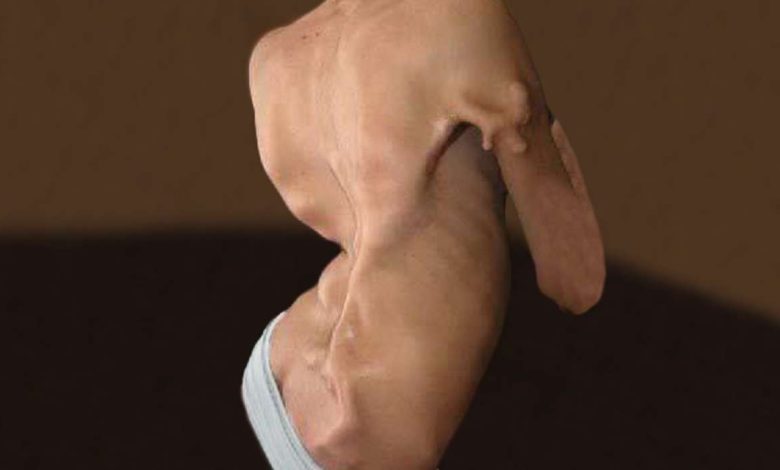List Of Top 20 Rare Diseases and Their Symptoms

A rare disease, colloquially referred to as an orphan disease, represents a medical conundrum that plagues a relatively minuscule fraction of a population. The precise parameters used to classify a condition as rare may differ from one nation to another, but it generally hinges on its low prevalence. Frequently, these conditions impact fewer than a specific number of individuals per 100,000 or per million in the populace. As such, rare diseases occupy a unique and somewhat obscure niche within the realm of healthcare.
These ailments often pose formidable challenges in the medical field. The scarcity of affected individuals translates into a dearth of data and understanding, which, in turn, leads to limited resources being allocated for research and treatment development. This scarcity extends to funding, as pharmaceutical companies may be disinclined to invest in research and drug development for conditions that affect only a small number of patients. As a result, individuals grappling with rare diseases often confront a daunting array of obstacles on their journey to diagnosis, treatment, and improved quality of life.
One of the most significant hurdles faced by those with rare diseases is the delayed or misdiagnoses. Since these conditions are, by definition, infrequent, healthcare providers may not readily recognize the symptoms, leading to protracted diagnostic odysseys that can span years. Furthermore, the scarcity of patients with the same condition means that support networks and advocacy groups are also limited, making it challenging for patients and their families to find resources and emotional support.
Despite these challenges, the field of rare diseases has made significant strides in recent years. Advances in genomics and molecular biology have facilitated the identification of the underlying genetic causes of many rare diseases, leading to more accurate diagnoses and targeted treatments. Additionally, patient advocacy groups have become powerful forces in raising awareness, funding research, and pushing for policy changes to improve the lives of those affected by rare diseases.
List Of Top 20 Rare Diseases and Their Symptoms
Rare diseases encompass a wide range of medical conditions, and it’s important to note that the rarity of these diseases often means that comprehensive lists can vary based on geographic regions and evolving medical knowledge. Additionally, the symptoms of rare diseases can be diverse and may overlap with more common conditions. Nevertheless, here is a list of 20 rare diseases along with some of their characteristic symptoms:
1. Progeria (Hutchinson-Gilford Progeria Syndrome)
• Rapid aging in children
• Hair loss
• Joint stiffness
• Cardiovascular problems
2. Narcolepsy
• Excessive daytime sleepiness
• Cataplexy (sudden loss of muscle tone)
• Sleep paralysis
3. Ehlers-Danlos Syndrome
• Joint hypermobility
• Skin that bruises easily and is hyperelastic
• Chronic joint and muscle pain
4. Huntington’s Disease
• Involuntary movements (chorea)
• Cognitive decline
• Behavioral changes
5. Alkaptonuria
• Darkening of urine upon exposure to air
• Joint and cartilage problems
• Heart and kidney complications
6. Kuru
• Progressive cerebellar ataxia
• Tremors
• Difficulty swallowing
7. Fibrodysplasia Ossificans Progressiva (FOP)
• Abnormal bone growth in soft tissues
• Limited joint mobility
• Deformities
8. Stiff Person Syndrome
• Muscle stiffness and spasms
• Anxiety and phobias
• Impaired mobility
9. Fields’ Syndrome (Hyper IgM Syndrome)
• Frequent and severe infections
• Low levels of antibodies (IgG and IgA)
• Enlarged lymph nodes and spleen
10. Alice in Wonderland Syndrome (AIWS)
• Distorted perception of time and space
• Hallucinations
• Visual distortions
11. Prader-Willi Syndrome
• Excessive appetite and overeating
• Growth hormone deficiency
• Intellectual disabilities
12. Pantothenate Kinase-Associated Neurodegeneration (PKAN)
• Dystonia (involuntary muscle contractions)
• Tremors
• Cognitive decline
13. Paraneoplastic Pemphigus
• Painful blistering of the skin and mucous membranes
• Severe mouth ulcers
• Associated with malignancies
14. Crigler-Najjar Syndrome
• Severe jaundice
• Kernicterus (brain damage)
• Requires lifelong phototherapy
15. Cystinosis
• Kidney dysfunction
• Deposits of cystine crystals in various organs
• Growth retardation
16. Fragile X Syndrome
• Intellectual and developmental disabilities
• Social and communication difficulties
• Repetitive behaviors
17. Stiff Skin Syndrome
• Hardening and thickening of the skin
• Limited joint mobility
• Respiratory problems
18. Polyarteritis Nodosa
• Skin ulcers
• Muscle and joint pain
• Nerve damage
19. Wolfram Syndrome (DIDMOAD)
• Diabetes mellitus
• Optic atrophy (vision loss)
• Hearing impairment
20. Maple Syrup Urine Disease (MSUD)
• Sweet-smelling urine
• Neurological symptoms (seizures, coma)
• Intellectual disabilities
These are just a few examples, and there are many more rare diseases with distinct symptoms. Diagnosing and managing rare diseases can be challenging due to their infrequency and the complexity of their symptoms, which often require specialized medical care and ongoing research.






One Comment